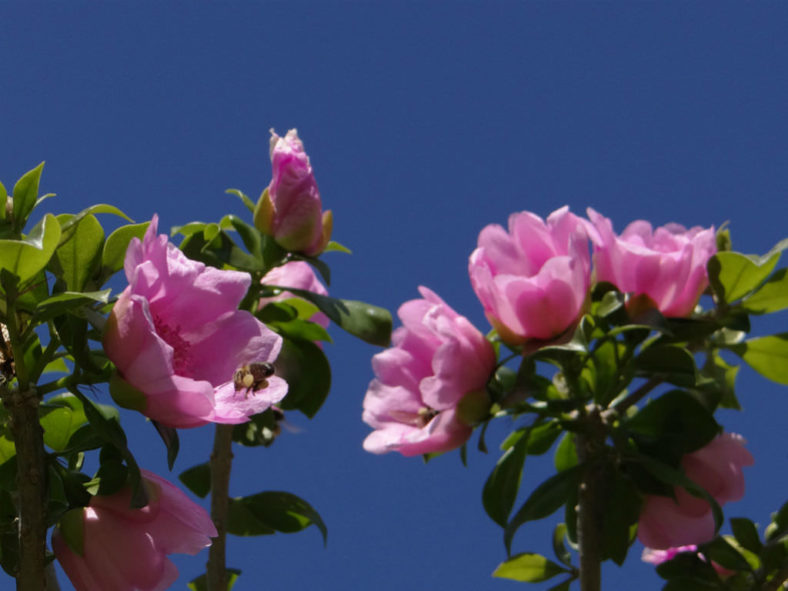If you see a Pereskia, commonly known as the Rose Cactus, while it is dormant in the winter, you will have no trouble believing it is in the Cactus Family. Leaves drop off in cold weather, revealing the bare green stem armed with the same kind of spines you will see in Rose Cactus' desert relatives. In summer, when bright green, up to 8 inches (20 cm) long leaves and pink, white, yellow, or coral-colored flowers cover the stems, it looks like a broadleaf shrub. Pereskia has about 24 species. They are native to South America and Central America.
Plant Description
Most Pereskias have woody upright growth, but some scramble in a vine-like manner using hooked spines to support themselves. Spines emerge from wooly hairs where the leaf joins the stem. Flowers are followed by fleshy yellow or orange fruits that attract birds. Pereskias vary in how tall they are and how vigorously they grow. For example, Wax Rose Cactus (Pereskia grandifolia), native to Brazil, has pink flowers and grows 10 to 20 feet (3 to 6 m) tall. Another commonly grown species with fragrant white, pink, or yellow flowers is sometimes called Lemon Vine (Pereskia aculeata). It has a clambering growth habit. Rose Cacti grow outdoors in USDA Plant Hardiness Zones 10 and 11, where you can trellis them or keep them pruned back as shorter shrubby plants. In zones below 10, grow Rose Cactus as a container plant that you can move indoors in winter.
Relationship to Other Cacti
Rose Cactus is regarded as a primitive cactus that gives some idea of what the ancestors of succulent leafless cacti might look like. The stems and leaves store water to some degree, and spine patterns are similar. They possess most water-use adaptations that allow succulent leafless cacti to succeed. Rose Cacti have shallow root systems to allow quick water uptake. They slow water loss by closing their breathing holes called stomata, and they can use crassulacean acid metabolism during hot, dry conditions. These adaptations allow their use in drought-tolerant and xeriscape gardens, giving the lush appearance of large green leaves even under tough conditions.

Cultivation
Use rich, well-drained soil for your Rose Cactus. During warm months, when plants are actively growing, keep the soil moist. Plants tolerate drier conditions but will not be as leafy. During winter dormancy, give enough water to keep the stem from wrinkling. Rose Cactus seems to need winter dormancy for flowering the following season. Plants grow in full sun or filtered shade. For overwintering indoors, provide plants with bright light. Prune plants to keep them to the desired size.
Propagation
Grow Rose Cactus from seeds or cuttings. Sow seeds in spring in a mix of half peat and half perlite, and keep the growing medium moist. Seeds germinate in 21 to 30 days. Take cuttings from young stems that have begun to harden. Do not let the cuttings dry. Instead, put them immediately into sand or the mix used for seeds in bright light rather than direct sunlight to the root. Because of its vigorous growth, Rose Cactus is often used as a rootstock for grafting slower-growing succulents and cacti.
Source: sfgate.com
Links
- Back to genus Pereskia
- Succupedia: Browse succulents by Scientific Name, Common Name, Genus, Family, USDA Hardiness Zone, Origin, or cacti by Genus